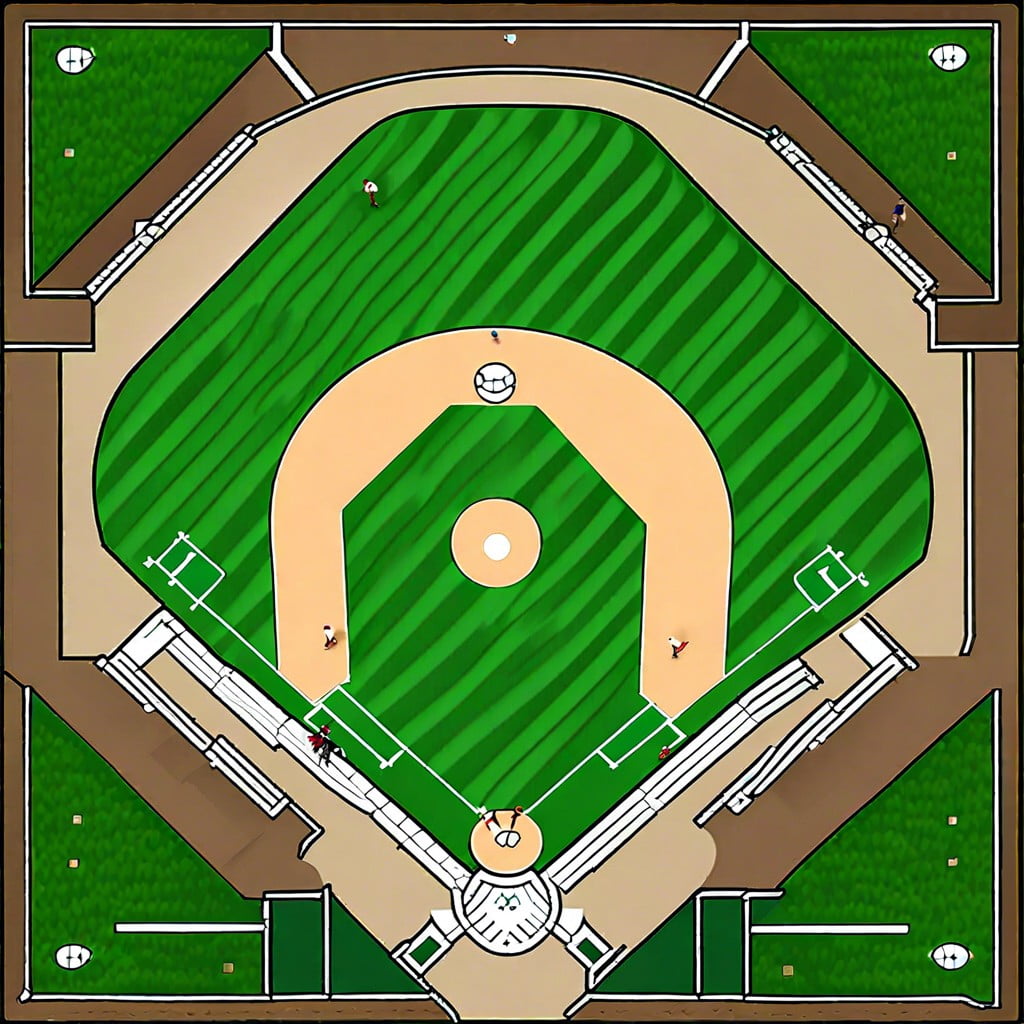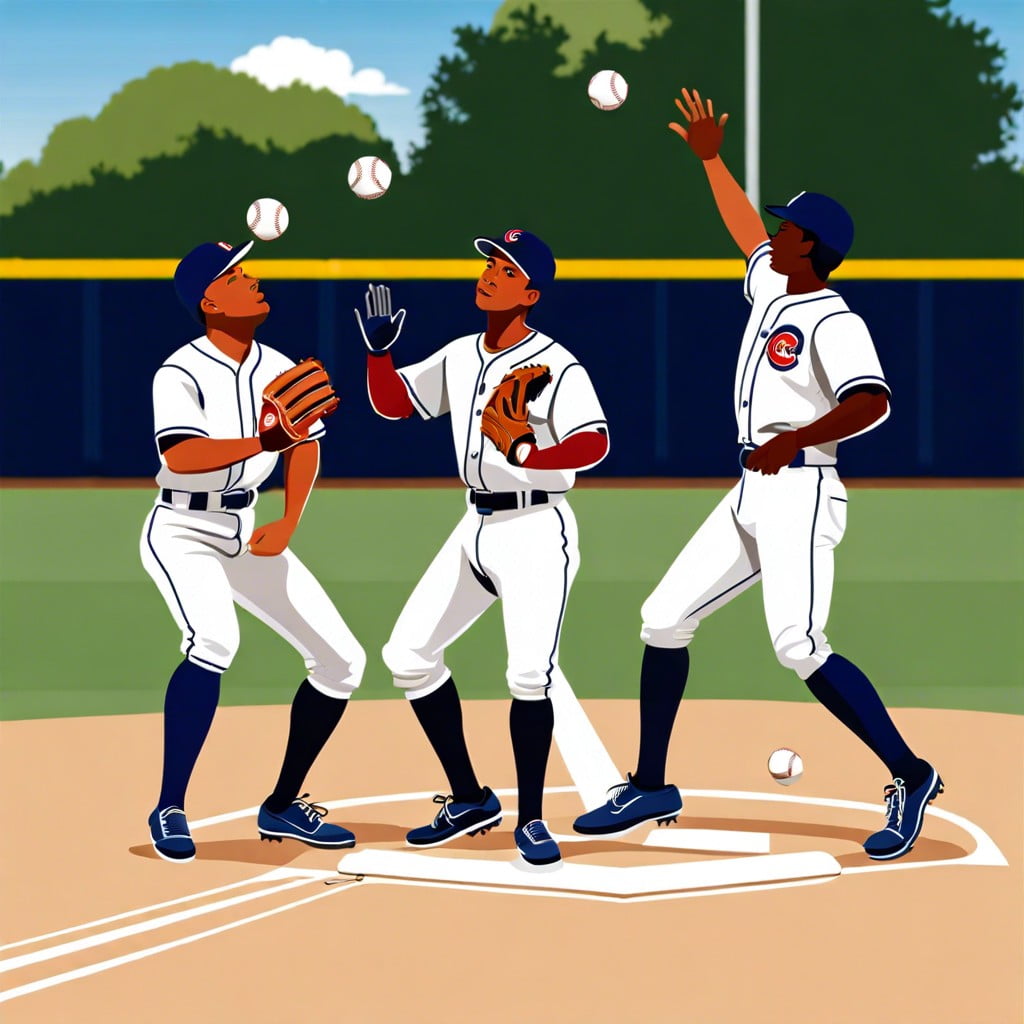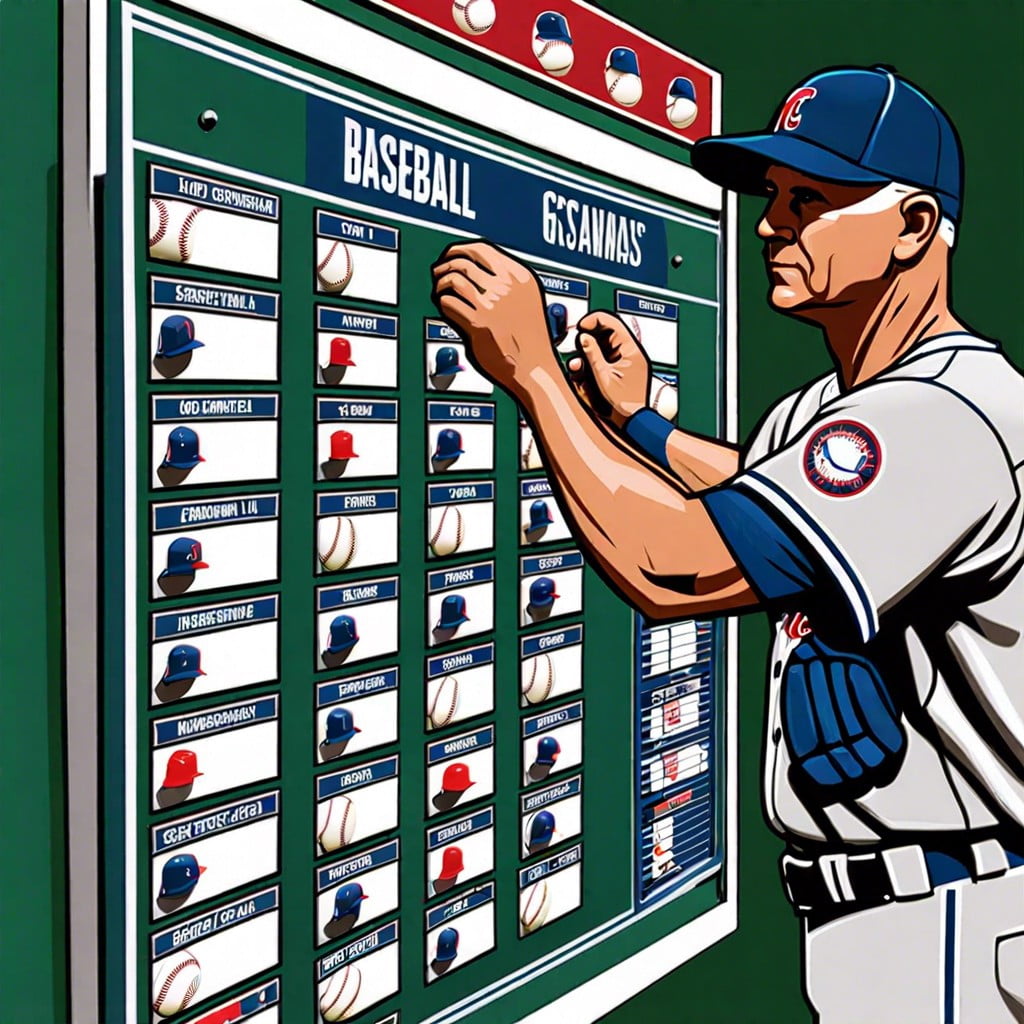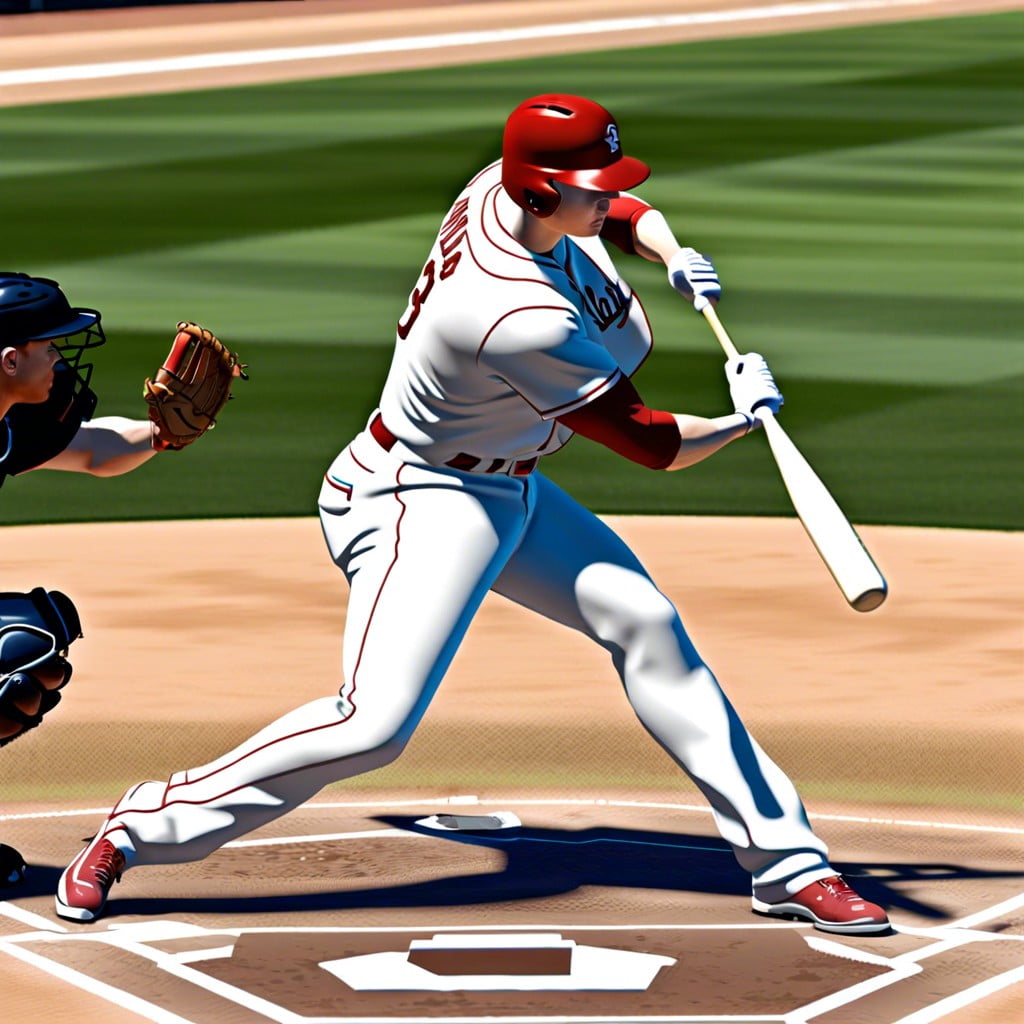Last updated on
Discover creative ways to use baseball chalk to enhance your field’s appearance and improve game play, from bold baselines to intricate foul line art.
Infield Positioning Tactics

Infield positioning tactics involve strategic placement of infielders to optimize play based on the batter’s tendencies and game situation. By analyzing hitter data, infielders can shift to areas where the ball is most likely to be hit, increasing the chance of making plays.
Adjustments are made in real-time, accounting for factors such as pitch type, pitcher’s strength, and base runner locations.
Outfield Communication Drills

Effective drills bolster coordination among outfielders, fostering clear and timely calls for fly balls.
These exercises aim to prevent collisions and misplays by practicing hand signals and verbal cues.
Routinely conducting these drills helps to cement trust and awareness between players, ensuring they work seamlessly during games.
Dynamic Stretching for Baseball Players

Dynamic stretching enhances flexibility and performance by mimicking baseball-specific movements.
The exercises involve controlled, active muscle work which prepares the body for the explosive actions encountered during the game.
Implementing a routine pre-play can reduce injury risk while promoting better coordination and agility on the field.
Pre-Game Warmup Routines

Pre-game warmup routines involve dynamic exercises tailored to activate a player’s muscles and increase their heart rate. These routines often incorporate agility drills, throwing progressions, and light cardiovascular activities to prepare the body for the range of movements required in a baseball game.
Consistent execution of these routines can enhance on-field performance and reduce the risk of injury.
Pitch Count Strategies

Establishing a pitch count strategy helps manage a pitcher’s workload, preventing overuse and injury throughout the season. By setting limits based on factors like age, skill level, and recent activity, coaches can maintain arm health while maximizing performance.
Utilizing pitch counts also informs decisions on when to warm up relievers and whether to allow a pitcher to face additional batters.
Clutch Hitting Techniques

Mastering the art of hitting under pressure involves psychological preparedness and focused practice on hitting in various game scenarios.
Drills that mimic high-stress situations can condition batters to remain calm and confident when it counts.
Helping hitters develop a consistent pre-at-bat routine contributes to improved performance during clutch moments.
Defensive Shifts and Analytics

Utilizing data analytics in baseball enables teams to apply defensive shifts, effectively repositioning infielders and outfielders based on a hitter’s tendencies.
This strategy increases the chance of players being in the right place to make outs, as historical play patterns predict where a ball is most likely to be hit.
By analyzing opponent batting statistics and spray charts, teams can adjust their defensive setups to diminish the batting team’s offensive impact.
Arm Care for Pitchers

Arm care for pitchers involves adopting a routine that includes proper stretching, strengthening exercises, and pitching mechanics to ensure longevity and prevent injury.
These practices focus on maintaining shoulder and elbow health through targeted workouts and adequate rest between pitching sessions.
Adherence to these protocols can result in improved performance and reduced risk of common pitching-related injuries.
Catcher’s Guide to Framing Pitches

Framing pitches enhances a catcher’s ability to subtly adjust the perceived location of a pitch, influencing umpires’ strike calls.
By receiving the ball with precise hand movements and body positioning, catchers can turn borderline pitches into strikes.
Proper technique can improve pitcher performance, control the pace of the game, and increase a team’s competitive edge.
Developing a Closer’s Mindset

A closer’s mindset centers on mental preparation and intense focus, allowing a player to handle the high-pressure situations at the end of a game.
This psychological fortitude is developed through specific mental exercises and real-game scenario practice.
It emphasizes controlling emotions, staying calm under pressure, and executing pitches with precision despite fatigue or adversity.
Creating Effective Lineup Strategies

Effective lineup strategies enhance a team’s offensive output by placing hitters in a sequence that maximizes on-base potential and run production. They consider individual player statistics, such as on-base plus slugging (OPS) and situational hitting success, to create a batting order tailored to exploit opponent weaknesses.
Positioning a balanced mix of contact hitters, power bats, and speed on the bases fosters a dynamic and adaptable offensive strategy throughout the game.
Base Stealing Tips and Tricks

Perfect your lead-off by observing the pitcher’s movements closely to maximize your jump time.
Utilize various sliding techniques to evade tags and reach the base safely.
Study catchers’ throwing habits and pitchers’ pick-off patterns to identify the best moments to attempt a steal.
The Art of the Double Play

The art of the double play involves coordinating infielders to execute two outs in quick succession, often shifting momentum within an inning.
Mastery requires players to refine their footwork, practice swift ball transfers, and develop keen situational awareness.
Properly executed, it’s a game-changing defensive maneuver that requires precision and teamwork.
Improving Pitch Recognition Skills

Enhanced pitch recognition skills allow hitters to make better decisions at the plate, resulting in higher batting averages.
Techniques include studying pitchers’ release points and identifying spin on the ball early.
Repetition through batting practice against a variety of pitches sharpens recognition and reaction times.
Mental Toughness Training for Late Innings

Mental toughness training equips players with strategies to handle pressure and adversity during critical late-inning scenarios. Techniques such as visualization, breathing exercises, and positive self-talk are used to enhance focus and confidence. This training helps maintain performance levels under stress, ensuring athletes are prepared for high-stakes situations.
Ideas Elsewhere
- https://www.tiktok.com/discover/drawing-with-chalk-baseball-ideas
- https://www.chalktalksports.com/baseball-art-displays/
- https://www.tiktok.com/discover/ideas-for-face-chalk-baseball
- https://spiderselite.com/2018/05/30/chalk-talk-classroom-practices/
Recap:




